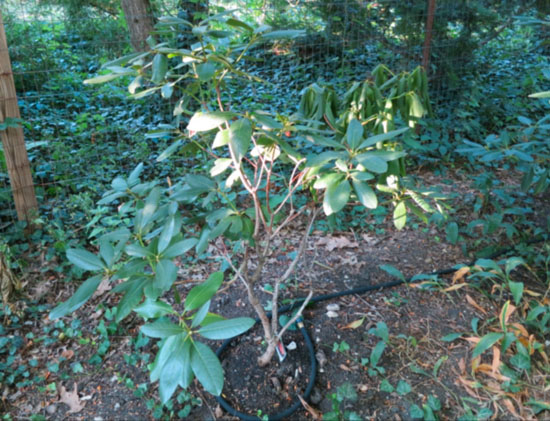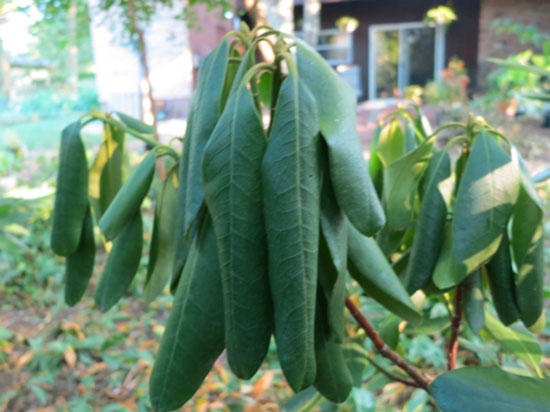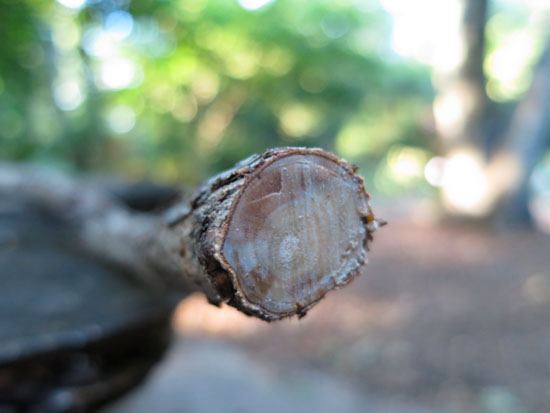Issue 12, July 16, 2012
Botryosphaeria Dieback of Rhododendron
Several fungal pathogens are known to cause wilt and dieback on rhododendrons. Phytophthora Dieback and Phytophthora Root Rot are often our first suspects when diagnosing in the field. Phytophthora dieback usually appears during flushes of new growth. The disease causes individual shoots and leaves of new growth to wilt and curl inward. The leaves develop a brown-black discoloration that forms a "V" shaped pattern from the mid-rib to the leaf margins. The pathogen moves quickly through succulent stems and causes a brown discoloration of the wood. Botryosphaeria Dieback can cause similar symptoms and is just as common in the landscape. There are some key differences between the diseases to help with diagnosis.
Botryosphaeria dieback on rhododendron is caused by the fungal pathogen Botryosphaeria dothidea. Unlike Phytophthora dieback, which usually appears during flushes of new growth, Botryosphaeria can appear at any time. The disease causes wilting and death to leaves and individual branches; however, several branches can be involved (first photo). Leaves on diseased branches droop and curl downward and parallel to the leaf midrib (second photo). Unlike Phytophthora, the leaves turn gray-green, then brown and remain attached to the stem. Xylem tissues on affected stems turn medium reddish brown color. Discolored tissues often appear on one side of the stem (third photo). The discoloration may extend several inches along the stem. When viewed in cross section, the stained wood may be wedge shaped, pointing towards the center of the stem.

Leaves curling and wilting on an idividual Rhododendron branch infected with Botryosphaeria Dieback.

Rhododendron leaves drooping and curing along the midrib

Cross section of a Rhododendron Branch. The reddish brown discoloration primarily appears on one side of the branch. Discoloration may also appear wedge shaped, pointing towards the center of the branch.
In the landscape, the disease often appears on recently planted rhododendrons that do not have well established root systems. Established plants are subject to infection as well. On older plants, the pathogen causes sunken cankers that slowly enlarge and eventually girdle the stem.
Heat stress and drought stress increase the incidence and severity of the disease. The rhododendron in the first photo was recently planted and displayed symptoms following an extended period of hot dry weather without irrigation.
Disease Management Strategies
- Affected branches should be promptly pruned out to remove all discolored wood. Utilize proper pruning techniques and avoid injuring other portions of the plant. Diseased branches should be removed from the site.
- Avoid conditions that are stressfull to the plants. Rhododendrons should be planted in partial shade in a site with acidic, well-drained soil.
- Irrigate the plants during extended, dry weather. Newly planted shrubs are especially sensitive to drought.
- Fungicides are not considered to be effective in treating this disease. However, some resources suggest they may be helpful when applied immediately after pruning.
(Travis Cleveland)
Author:
Travis Cleveland